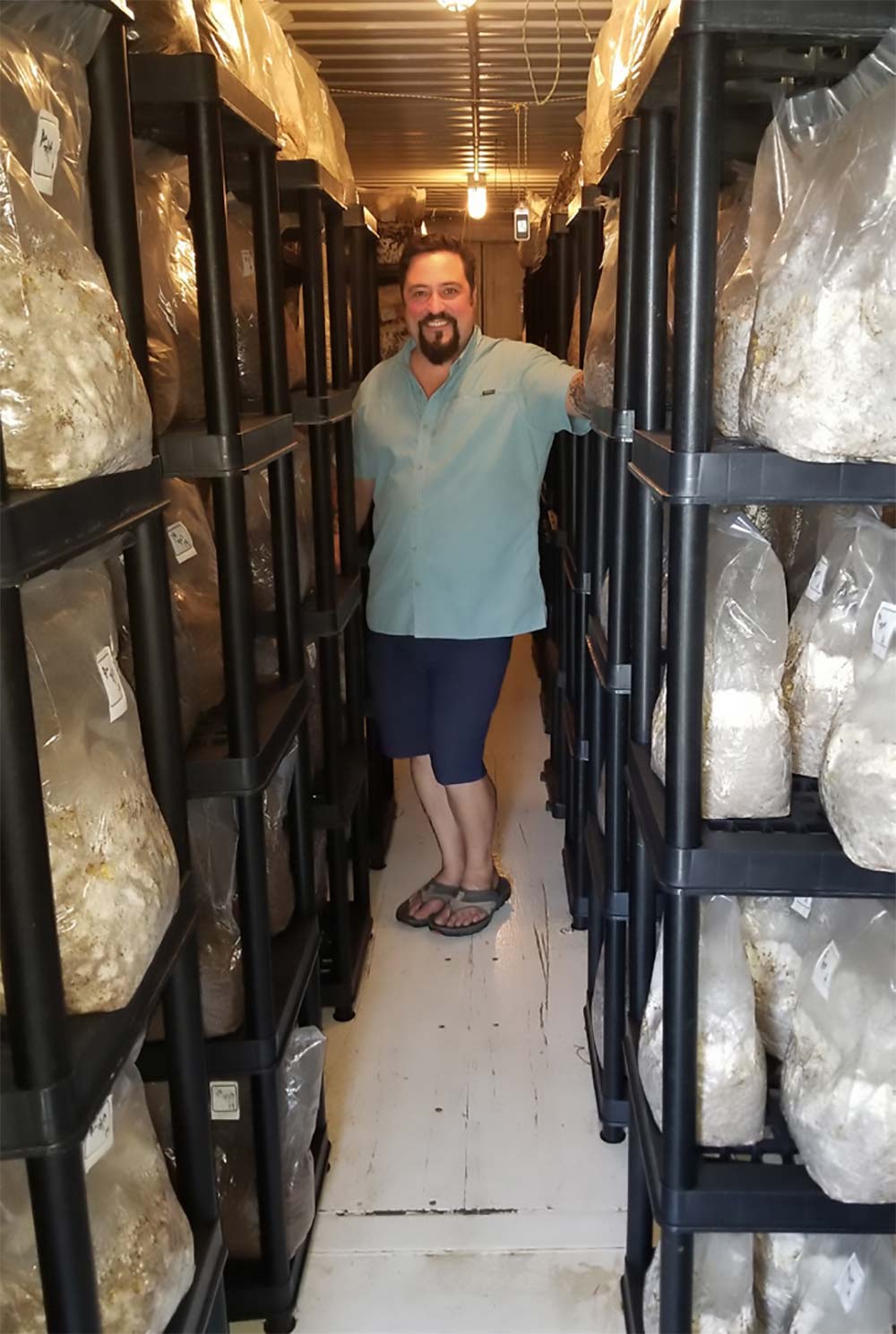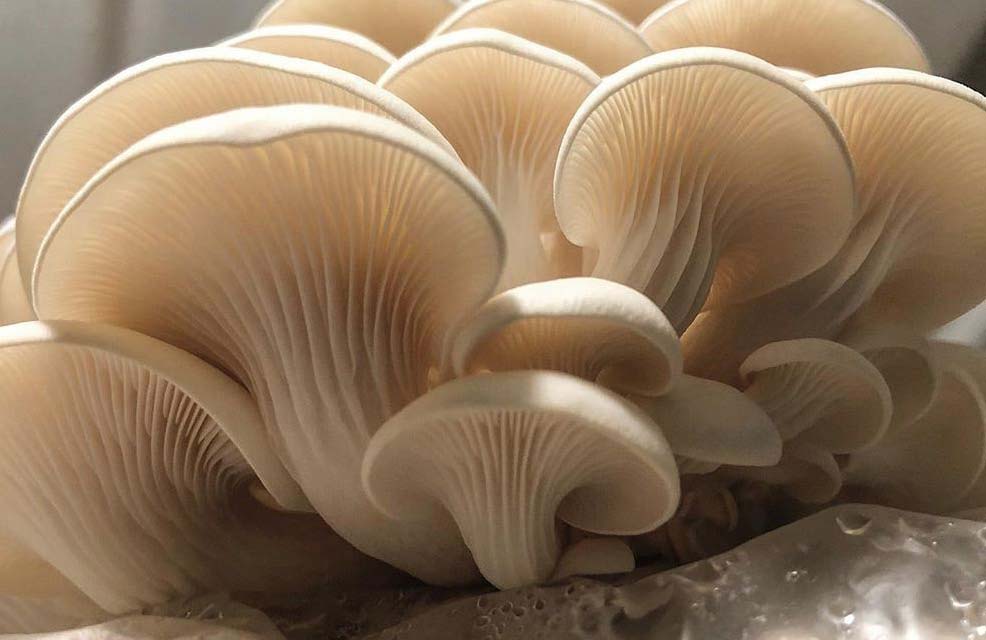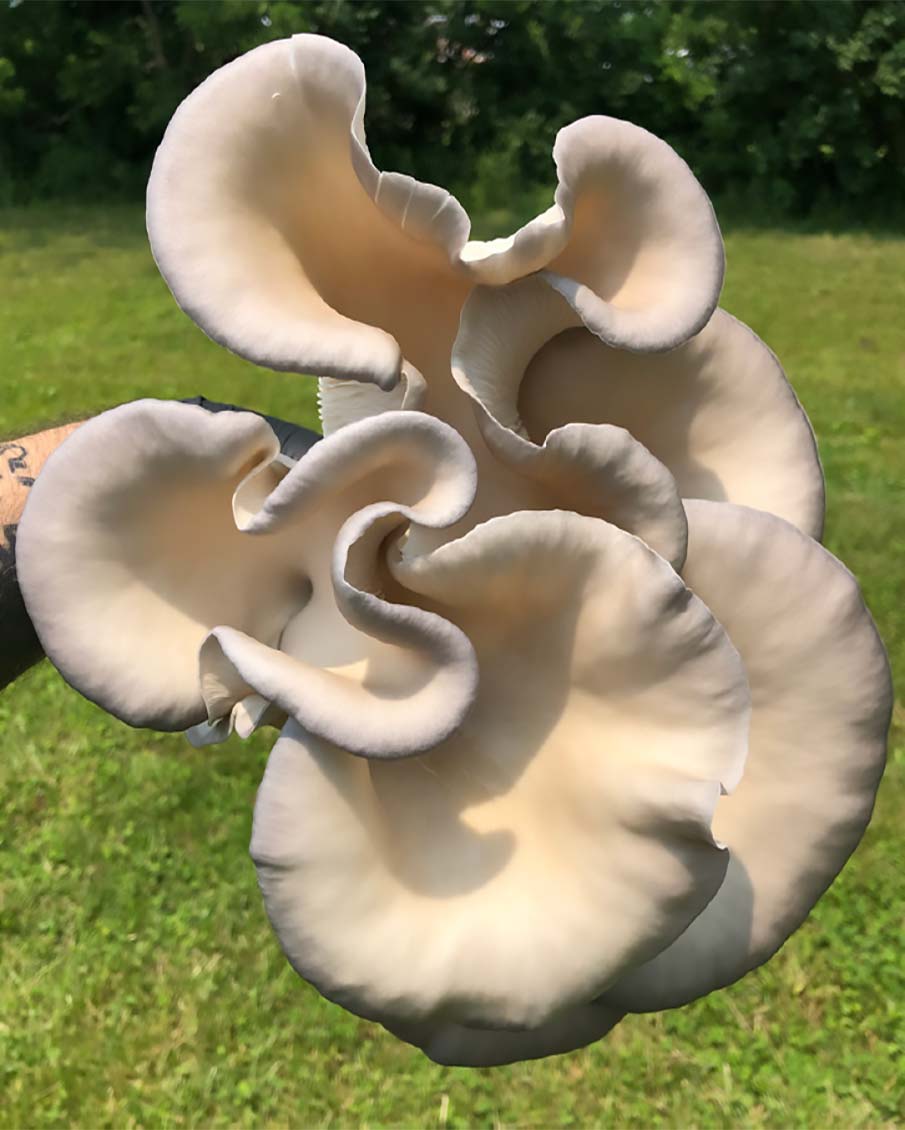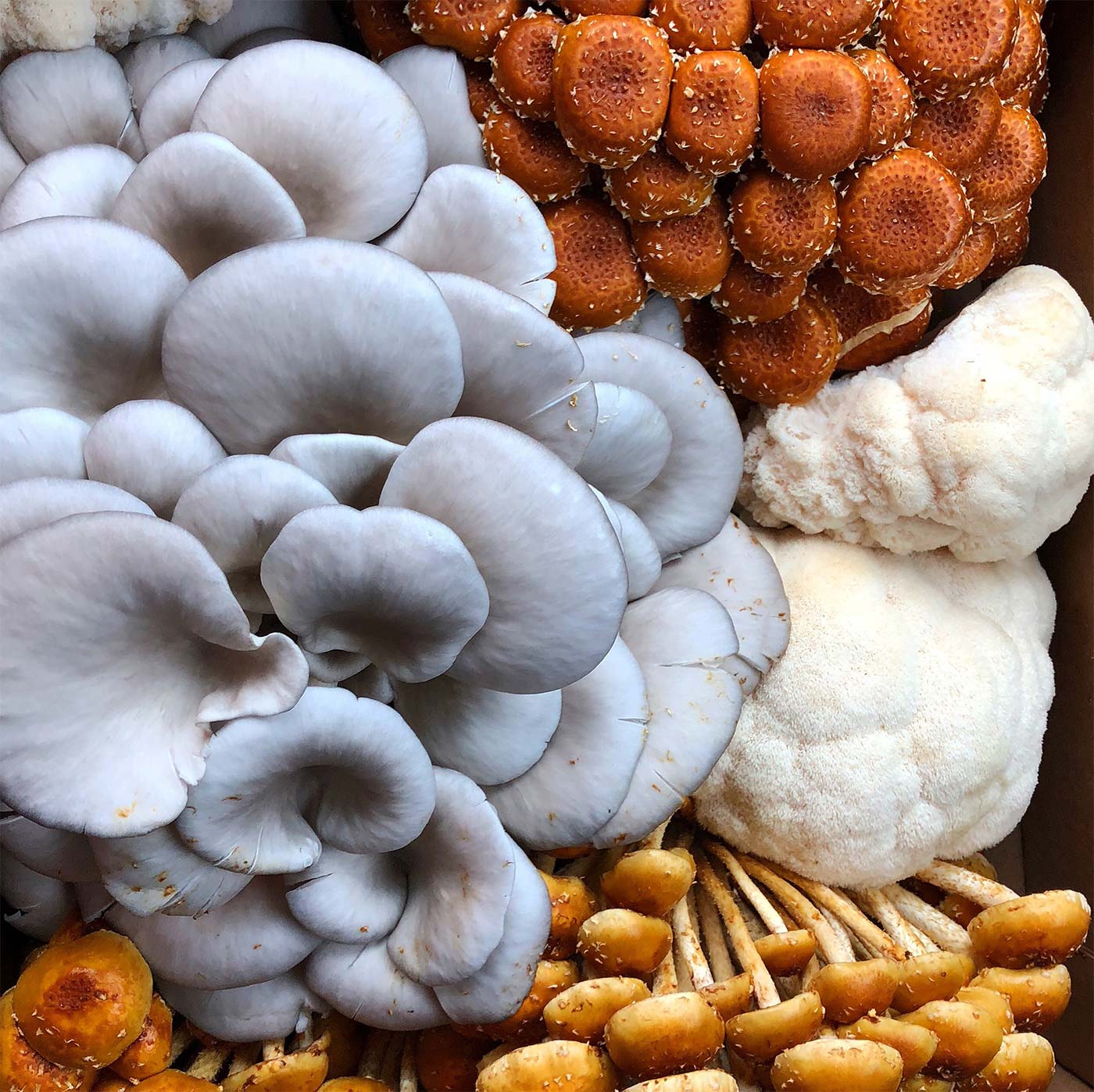Making of a Mushroom
Years ago, someone gave my dad one of those mushroom logs. My sister’s black Lab thought it was just a fun stick and swam off with it, so nothing came of it. I tried my hand at one of the grow boxes, too, but nothing came of that either. It turns out that it is not so easy to cultivate mushrooms from a log or a box; I suppose one must think like a mushroom in order to pull it off and that is exactly what Patrick Webb does at Frondosa Farms in western Shelby County, Kentucky.
Patrick got into the mushroom business in 2014 and sold his first mushrooms to The Brown Hotel in Louisville in the spring of 2015. Now, nearly five years into it, he has 18 local standing orders per week, in addition to special orders and selling at the Simpsonville Farmers’ Market.
He has strong ties to Louisville’s restaurant and hospitality scene and decided that those relationships would complement his desire to start farming mushrooms. Additionally, he recognized that there was little mushroom competition in the area after Billy Webb (no relation) of Sheltowee Farm shuttered his mushroom operation. With little mushroom competition in the regional area, on April Fool’s Day in 2015, Patrick left an unsatisfying job in New York and moved back home to the Louisville area with his wife, Melanie, and their two young children.
Patrick Webb became a student of mushrooms. His business model made sense but he still needed to learn how to think like a mushroom and he did just that. His research included visiting the Washington state farm of leading mushroom grower Paul Stamets. He immersed himself in the science of cultivation and his mushrooms speak volumes about his mastery of the art. His mushrooms are visually stunning in size, color and shape and he recognizes the support and education he has gotten from mushroom growers from around the world.
During a recent visit to his farm he explained the process, keeping a few of his proprietary secrets to himself. The operation looks like a clandestine marshmallow on a hill. He purchased five shipping containers (an idea inspired by the trend to build tiny houses out of them); outfitted them with electricity, water, air conditioning and ventilation; and then applied a four-inch coating of spray tech foam to the exterior of the grouped containers.
Each container serves a purpose in the growing process. First, the crop begins in a sterile environment at home, where he grows out mushroom culture in Petri dishes filled with agar; this takes about 10 days. These cultures are then transferred to sterilized substrate bricks made out of sawdust and wrapped in a vented polypropylene bag. To reduce chances of contamination, Patrick makes these hydrated sterile bricks just before the cultures are ready for transfer. In this incubation stage the inoculated spores colonize the bricks.

Patrick Webb in one of the shipping containers that has been converted into a mushroom “greenhouse.”

Juvenile Elm Oyster

Adolescent Blue Oyster
He explained that each species of mushroom takes a different amount of time from inoculation to fruiting body (the mushroom). Shiitakes can take up to three months but most take around two to four weeks. Once the bricks are adequately colonized, they are moved to the fruiting chamber. Here the bags are sliced open to allow more air to reach the mycelium, which stimulates fruiting. Other keys to fruiting are lowering the temperature, increasing humidity, adding 12 hours of light and 12 hours of dark and turning on the fresh-air exchange. Patrick has worked out the rhythm of the work so all of this is on timers, which allows for a usually consistent response from the mushrooms.
I asked, how do you know when a mushroom is ripe. It is very much like other flowering plants: Once something starts to go to seed it begins to decline. Same for mushrooms. Once the mushroom begins to drop spores it is ripe. Since Frondosa Farms is an indoor operation where no pesticides are used, the mushrooms are simply cut from the bricks and packed and delivered same day so that they are the freshest they can be. For home cooks he recommends that you store your mushrooms refrigerated in paper bags. In fact, mushrooms “soak up water like a sponge” so washing them is largely a detriment (I would wash all produce eaten raw, however). Plus, they are better cooked than raw so the heat applied in cooking will kill any bacteria. I remember one of the first conversations that Patrick and I had when he visited the Simpsonville Farmers’ Market was about the importance of cooking mushrooms to maximize the nutrient benefit. Mushrooms are nutrient dense and have been clinically proven to boost the immune system, among other things. Just like other fruits and vegetables, how they are grown and what variety they are gives you more or less of this benefit.
Frondosa Farms is not one man’s fancy to grow mushrooms in spray-foamed shipping containers on a hill, this is Patrick Webb’s day job and intends this to be a family farm endeavor that he can involve his children in when they are ready. He is content to stay small, commercial and locally focused but plans to explore the retail potential of the mushroom jerky that he home-processes with leftover mushrooms. Every specialty crop farmer knows that fresh produce is only fresh for so long so shelf-stable mushroom jerky seems like a great idea to me.
Find out more at FrondosaFarms.com or, on Instagram, FrondosaFarms.

Grey Oyster or Tree Oyster





